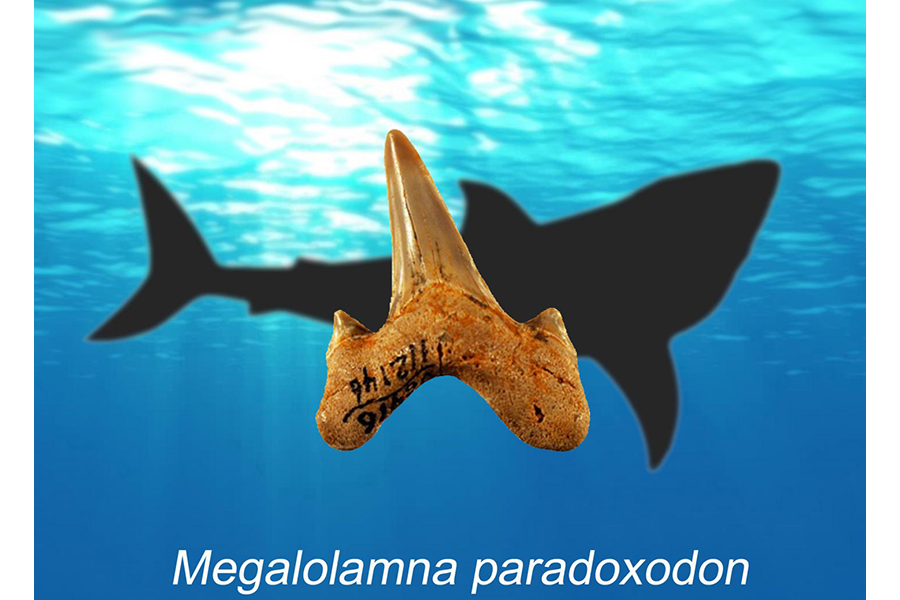Teeth reveal new extinct species of giant shark
Loading...
Millions of years ago, massive sharks stalked their prey through the world’s waters. Today, following the discovery of its teeth in very different places around the globe, scientists say that a newly discovered species called Megalolamna paradoxodon is remarkable in its range and size.
Megalolamna, a cousin of the famous megalodon, left toothy reminders of its presence in such disparate parts as modern day Peru, North Carolina, California, and Japan, although it was rare compared to megalodon.
"The fact that such a large …shark with such a wide geographic distribution had evaded recognition until now indicates just how little we still know about the Earth's ancient marine ecosystem," said study lead author Kenshu Shimada, of DePaul University.
The shark lived about 20 million years ago, and researchers have been able to trace its range in the world’s oceans by the massive 2-inch teeth it left behind.
Yet despite the dental hints it left, scientists say that until now, Megalolamna was not recognized as a distinct species. At first, they believed it was similar to megalodon or a member of the Lamna shark genus, the ancestors of modern salmon sharks and porbeagles. Closer examination of Megalolamna teeth, however, shows that the shark is not a Lamna shark relative, as the teeth were too “robust.”
Instead, researchers say that the Otodus genus could be a better classification for the massive sharks than the traditional Carcharocles genus.
“It’s quite remarkable that such a large lamniform shark with such a global distribution had evaded recognition until now, especially because there are numerous Miocene localities where fossil shark teeth are well sampled,” said Dr. Shimada.
Although researchers say that the idea that both Megalolamna and megalodon should be moved to the Otodus genus is not original to their study, they say that theirs is the first to logically demonstrate the taxonomic (or classification) proposition.
Like modern great white sharks, Melalolamna and its megalodon cousins had teeth formed of fluoroapatite, a fluoride substance that kept teeth from decaying.
"You might say that these sharks used 'built-in toothpaste,'" said Matthias Epple of the University of Duisburg-Essen, according to Seeker.
While the megalodon would have been king of the seas 20 million years ago when it coexisted with megalolamna, it is unlikely that the 33-foot megalodon preyed on the 13-foot megalolamna too frequently, scientists say.
And although the ancestors of today’s great white shark might have known megalodons, scientists do not believe that they are descended from the massive predator.
"The earliest forms of the great white shark coexisted with megalodon," Shimada said, "but as megalodon dwindled down and became extinct, the way we can look at it is that the great white shark took over the ecological role of megalodon and became the 'superpredator' of the modern seas."








